Planning of district heating networks
Stefan Breithuber
Graduate, works at KELAG Energie & Wärme GmbH
In addition to basic knowledge in computer science and mathematics, the focus of the training is on geoinformation and its use in environmental issues, e.g.
In addition to problem-solving skills, interdisciplinary thinking and working, and technological know-how, the following skills are needed to deal with these questions:
Please contact us if you have any questions about your studies:
FH-Prof. Dipl.-Ing. Dr. Gerald Gruber

HTL graduates can shorten their bachelor's degree by up to one year if they have passed selected entrance examinations before starting their studies and have completed a relevant HTL. The entry requirement for the 2nd or 3rd semester is a grade point average of 2 or better in the last two annual reports (4th and 5th grade) of the HTL.
Entry into the 2nd semester is possible on an individual basis after reviewing the documents.
With over 100 Study & Work partner companies and organizations, CUAS offers students the opportunity to combine studying and working!
The Bachelor's major in Geoinformation and Environment is dedicated to the fundamentals of Geographic Information Systems (GIS) and their applications in engineering, ecology, and business. Students gain a comprehensive insight into the geoinformation sciences and learn how they are applied in a variety of practical ways. The program is characterized by interdisciplinarity, internationality, and a strong hands-on approach.
From environmental applications to spatial decision support to risk management, there are wide-ranging applications in geoinformation. In the course of their studies, students also deal with the design and development of GI systems and applications (e.g. WebGIS, geo-apps), analytics, spatial analysis and statistics, as well as data modeling, geodatabases and visualization. All these fields contribute from different perspectives to one thing above all: to a better understanding of our environment.
Concrete previous knowledge is not necessary for the Bachelor's program Geoinfomation and Environment. Therefore, students from all types of schools can start this study program after graduating from high school if they have the appropriate interest and willingness to perform. In order to facilitate the start of studies, the FH Kärnten offers intensive courses in mathematics, computer science and physics. Lack of university entrance qualification can be compensated by relevant professional qualification and attendance of the pre-study course.
| Lecture | Type | SPPS | ECTS-Credits | Course number |
|---|---|---|---|---|
| Discrete Mathematics Group 1 | ILV | 4,0 | 5,0 | B2.08510.10.011 |
| Discrete Mathematics Group 2 | ILV | 4,0 | 5,0 | B2.08510.10.011 |
| Introduction to Programming and Principles of Computer Science Group 1 | ILV | 4,0 | 5,0 | B2.08510.10.013 |
| Introduction to Programming and Principles of Computer Science Group 2 | ILV | 4,0 | 5,0 | B2.08510.10.013 |
| Linear Algebra and Analytic Geometry Group 1 | ILV | 3,0 | 5,0 | B2.08510.10.012 |
| Linear Algebra and Analytic Geometry Group 2 | ILV | 3,0 | 5,0 | B2.08510.10.012 |
| Project Management | ILV | 2,0 | 2,0 | B2.08510.10.010 |
| Study program: Medical Engineering | Type | SPPS | ECTS-Credits | Course number |
| Fundamentals on Anatomy and Pyhysiology | VO | 4,0 | 5,0 | B2.08512.10.013 |
| Fundamentals of Electrical Engineering | VO | 2,0 | 3,0 | B2.08511.10.010 |
| Fundamentals of Electrical Engineering - Lab | LAB | 2,0 | 2,0 | B2.08512.10.011 |
| Basics of Physics | ILV | 2,0 | 3,0 | B2.08512.10.014 |
| Study program: Network & Communication Engineering | Type | SPPS | ECTS-Credits | Course number |
| Fundamentals of Electrical Engineering | VO | 2,0 | 3,0 | B2.08511.10.010 |
| Fundamentals of Electrical Engineering - Lab | LAB | 2,0 | 2,0 | B2.08512.10.011 |
| Fundamentals of Telecommunication | ILV | 4,0 | 5,0 | B2.08513.10.013 |
| Basics of Physics | ILV | 2,0 | 3,0 | B2.08512.10.014 |
| Lecture | Type | SPPS | ECTS-Credits | Course number |
|---|---|---|---|---|
| Mobile Device Architectures 1 | ILV | 2,0 | 2,5 | B2.08510.30.015 |
| Data Managament | ILV | 2,0 | 2,0 | B2.08510.30.020 |
| Introduction to Artificial Intelligence | ILV | 2,0 | 3,0 | B2.08510.30.021 |
| English 2 - Technical English and Business Communication Group 1 | SE | 2,0 | 2,0 | B2.08510.30.010 |
| English 2 - Technical English and Business Communication Group 2 | SE | 2,0 | 2,0 | B2.08510.30.010 |
| Mobile Application Development 1 | ILV | 2,0 | 2,5 | B2.08510.30.016 |
| IoT - Basics | ILV | 2,0 | 2,5 | B2.08510.30.030 |
| IoT - Standards and Protocols 1 | ILV | 2,0 | 2,5 | B2.08510.30.031 |
| Software Engineering 1 Group 1 | ILV | 2,0 | 2,0 | B2.08510.30.013 |
| Software Engineering 1 Group 2 | ILV | 2,0 | 2,0 | B2.08510.30.013 |
| Statistics and Probability Theory | ILV | 2,0 | 2,0 | B2.08510.30.012 |
| Web Programming Group 1 | ILV | 3,0 | 5,0 | B2.08510.30.011 |
| Web Programming Group 2 | ILV | 3,0 | 5,0 | B2.08510.30.011 |
| Study program: Geoinformation and Environment | Type | SPPS | ECTS-Credits | Course number |
| Remote Sensing | ILV | 2,0 | 3,0 | B2.08514.30.010 |
| Geo-Databases | ILV | 2,0 | 3,0 | B2.08514.30.012 |
| Geodatenqualität | ILV | 2,0 | 2,0 | B2.08514.30.013 |
| Projections and Coordinate Systems | ILV | 2,0 | 3,0 | B2.08514.30.011 |
| Spatial Interpolation Techniques | ILV | 2,0 | 3,0 | B2.08514.30.014 |
| Study program: Medical Engineering | Type | SPPS | ECTS-Credits | Course number |
| Fundamentals on Biosensors and Measuring Technologies | ILV | 3,5 | 5,0 | B2.08512.30.011 |
| Medical Signal Processing | ILV | 3,5 | 4,0 | B2.08512.30.012 |
| Interfaces in Medicine | ILV | 3,5 | 5,0 | B2.08512.30.010 |
| Study program: Multimedia Technology | Type | SPPS | ECTS-Credits | Course number |
| 3D Graphics Engines | ILV | 4,0 | 5,0 | B2.08511.30.011 |
| 3D Modelling | ILV | 3,5 | 5,0 | B2.08511.30.010 |
| Introduction to Virtual and Augmented Reality | ILV | 3,0 | 4,0 | B2.08511.30.012 |
| Study program: Network & Communication Engineering | Type | SPPS | ECTS-Credits | Course number |
| Microcontroller | ILV | 4,0 | 6,0 | B2.08513.30.011 |
| Network Modelling | ILV | 2,0 | 2,0 | B2.08513.30.010 |
| Signals and Systems 2 | ILV | 4,0 | 6,0 | B2.08513.30.012 |
| Lecture | Type | SPPS | ECTS-Credits | Course number |
|---|---|---|---|---|
| Data Sources and Data Quality | ILV | 2,0 | 2,5 | B2.08510.50.020 |
| English 4 - Career and Professional Skills Group 1 | SE | 2,0 | 2,0 | B2.08510.50.010 |
| English 4 - Career and Professional Skills Group 2 | SE | 2,0 | 2,0 | B2.08510.50.010 |
| Mobile Application Development 3 | ILV | 4,0 | 5,0 | B2.08510.50.015 |
| IoT - Applications | ILV | 4,0 | 5,0 | B2.08510.50.030 |
| Project Bachelor Group 1 | PA | 0,5 | 7,0 | B2.08510.50.011 |
| Project Bachelor Group 2 | PA | 0,5 | 7,0 | B2.08510.50.011 |
| Project Bachelor Group 3 | PA | 0,5 | 7,0 | B2.08510.50.011 |
| Selected Topics on Data Science | SE | 2,0 | 2,5 | B2.08510.50.021 |
| Study program: Medical Engineering | Type | SPPS | ECTS-Credits | Course number |
| Medical Smart Sensors | ILV | 3,5 | 5,0 | B2.08512.50.013 |
| Law and Standards | VO | 1,0 | 1,0 | B2.08512.50.010 |
| Telehealth | ILV | 3,5 | 5,0 | B2.08512.50.011 |
| Visualization in Medicine | ILV | 3,5 | 5,0 | B2.08512.50.012 |
| Study program: Multimedia Technology | Type | SPPS | ECTS-Credits | Course number |
| Best Practices for Multimedia Technologies | ILV | 3,0 | 4,0 | B2.08511.50.011 |
| Digital Rights Management | VO | 2,0 | 2,0 | B2.08511.50.010 |
| Innovation Management for Multimedia Technologies | SE | 2,0 | 3,0 | B2.08511.50.012 |
| Multimedia Content Production | ILV | 3,5 | 5,0 | B2.08511.50.013 |
| Technology and Society | SE | 2,0 | 2,0 | B2.08511.50.014 |
| Study program: Network & Communication Engineering | Type | SPPS | ECTS-Credits | Course number |
| Radio Networks | ILV | 2,0 | 3,0 | B2.08513.50.010 |
| Network Design 2 | ILV | 3,0 | 5,0 | B2.08513.50.012 |
| Network Management | ILV | 3,0 | 4,0 | B2.08513.50.011 |
| Software Defined Networks | ILV | 3,0 | 4,0 | B2.08513.50.013 |
| Lecture | Type | SPPS | ECTS-Credits | Course number |
|---|---|---|---|---|
| Algorithms and Object-Oriented Programming | ILV | 3,5 | 5,0 | B2.08510.20.013 |
| Analysis | ILV | 3,0 | 5,0 | B2.08510.20.011 |
| Database Systems | ILV | 3,5 | 5,0 | B2.08510.20.014 |
| English 1 - Introduction to Technical English | SE | 2,0 | 2,0 | B2.08510.20.010 |
| Study program: Medical Engineering | Type | SPPS | ECTS-Credits | Course number |
| Fundamentals of Electronics | ILV | 4,0 | 5,0 | B2.08512.20.010 |
| Medical instrumentation | VO | 3,0 | 4,0 | B2.08512.20.012 |
| Medical Information Systems | ILV | 3,0 | 4,0 | B2.08512.20.011 |
| Study program: Network & Communication Engineering | Type | SPPS | ECTS-Credits | Course number |
| Fundamentals of Electronics | ILV | 4,0 | 5,0 | B2.08512.20.010 |
| Internet Technologies | ILV | 3,0 | 4,0 | B2.08513.20.011 |
| Signals and Systems 1 | ILV | 3,0 | 4,0 | B2.08513.20.012 |
| Lecture | Type | SPPS | ECTS-Credits | Course number |
|---|---|---|---|---|
| Mobile Device Architectures 2 | ILV | 2,0 | 2,5 | B2.08510.40.013 |
| BIG Data Visualization | ILV | 2,0 | 3,0 | B2.08510.40.021 |
| English 3 - Academic Presentation Group 1 | SE | 2,0 | 2,0 | B2.08510.40.010 |
| English 3 - Academic Presentation Group 2 | SE | 2,0 | 2,0 | B2.08510.40.010 |
| Mobile Application Development 2 | ILV | 2,0 | 2,5 | B2.08510.40.014 |
| IoT - Sensors and Actuators | ILV | 2,0 | 2,5 | B2.08510.40.031 |
| IoT - Standards and Protocols 2 | ILV | 2,0 | 2,5 | B2.08510.40.032 |
| Project Group 1 | PJ | 2,0 | 5,0 | B2.08510.40.011 |
| Project Group 2 | PJ | 2,0 | 5,0 | B2.08510.40.011 |
| Project Group 3 | PJ | 2,0 | 5,0 | B2.08510.40.011 |
| Project Group 4 | PJ | 2,0 | 5,0 | B2.08510.40.011 |
| Software Engineering 2 Group 1 | ILV | 2,0 | 3,0 | B2.08510.40.012 |
| Software Engineering 2 Group 2 | ILV | 2,0 | 3,0 | B2.08510.40.012 |
| Statistical Models in Data Science | ILV | 2,0 | 2,0 | B2.08510.40.020 |
| Study program: Geoinformation and Environment | Type | SPPS | ECTS-Credits | Course number |
| Digital Earth: Models, Methods and Applications | SE | 2,0 | 3,0 | B2.08514.40.014 |
| Digitale Geomedien 1 | ILV | 2,0 | 3,0 | B2.08514.40.011 |
| Dissemination of GI: Effective Presentation Techniques | ILV | 2,0 | 2,0 | B2.08514.40.010 |
| Spatial Analysis | ILV | 3,0 | 4,0 | B2.08514.40.015 |
| Spatial Data Structures and Algorithms | ILV | 2,0 | 3,0 | B2.08514.40.013 |
| Study program: Medical Engineering | Type | SPPS | ECTS-Credits | Course number |
| Imaging Modalities | ILV | 3,5 | 5,0 | B2.08512.40.012 |
| Medizinische Bildanalyse und Bildverarbeitung | ILV | 3,5 | 5,0 | B2.08512.40.011 |
| Medical Informatics | ILV | 3,5 | 5,0 | B2.08512.40.010 |
| Study program: Multimedia Technology | Type | SPPS | ECTS-Credits | Course number |
| 3D Graphics Engines - Lab | UE | 3,0 | 5,0 | B2.08511.40.011 |
| Computer Animation | ILV | 3,0 | 5,0 | B2.08511.40.010 |
| User Interfaces for AR and VR | ILV | 3,5 | 5,0 | B2.08511.40.012 |
| Study program: Network & Communication Engineering | Type | SPPS | ECTS-Credits | Course number |
| Mobile Communication | ILV | 4,0 | 5,0 | B2.08513.40.012 |
| Network Design 1 | ILV | 3,0 | 3,0 | B2.08513.40.010 |
| Optical Networks | ILV | 3,0 | 4,0 | B2.08513.40.011 |
| Verteilte Systeme | ILV | 2,0 | 3,0 | B2.08513.40.013 |
| Lecture | Type | SPPS | ECTS-Credits | Course number |
|---|---|---|---|---|
| Bachelor Examination | BE | 0,0 | 2,0 | B2.08510.60.013 |
| Seminar for Bachelor Thesis | SE | 0,2 | 6,0 | B2.08510.60.012 |
| Professional Internship | BPR | 4,0 | 19,0 | B2.08510.60.010 |
| Current IT Trends | VO | 3,0 | 3,0 | B2.08510.60.014 |
| Lecture | Type | SPPS | ECTS-Credits | Course number |
|---|---|---|---|---|
| Discrete Mathematics | ILV | 4,0 | 5,0 | B2.08510.10.011 |
| Introduction to Programming and Principles of Computer Science | ILV | 4,0 | 5,0 | B2.08510.10.013 |
| Linear Algebra and Analytic Geometry | ILV | 3,0 | 5,0 | B2.08510.10.012 |
| Project Management | ILV | 2,0 | 2,0 | B2.08510.10.010 |
| Study program: Geoinformation and Environment | Type | SPPS | ECTS-Credits | Course number |
| Digitalisierung und Umwelt | ILV | 2,0 | 3,0 | B2.08514.10.010 |
| Mensch.Umwelt.Technologie 1 | ILV | 5,0 | 6,0 | B2.08514.10.011 |
| Umweltdaten: erheben, verstehen, handeln | ILV | 3,0 | 4,0 | B2.08514.10.012 |
| Study program: Medical Engineering | Type | SPPS | ECTS-Credits | Course number |
| Fundamentals on Anatomy and Pyhysiology | VO | 4,0 | 5,0 | B2.08512.10.013 |
| Fundamentals of Electrical Engineering | VO | 2,0 | 3,0 | B2.08511.10.010 |
| Fundamentals of Electrical Engineering - Lab | LAB | 2,0 | 2,0 | B2.08512.10.011 |
| Basics of Physics | ILV | 2,0 | 3,0 | B2.08512.10.014 |
| Study program: Multimedia Technology | Type | SPPS | ECTS-Credits | Course number |
| Audio and Video Technology 1 | ILV | 4,5 | 5,0 | B2.08511.10.012 |
| Digital Photography and Image Composition | ILV | 3,0 | 5,0 | B2.08511.10.013 |
| Design Basics - Visual Communication | ILV | 2,0 | 3,0 | B2.08511.10.011 |
| Study program: Network & Communication Engineering | Type | SPPS | ECTS-Credits | Course number |
| Fundamentals of Electrical Engineering | VO | 2,0 | 3,0 | B2.08511.10.010 |
| Fundamentals of Electrical Engineering - Lab | LAB | 2,0 | 2,0 | B2.08512.10.011 |
| Fundamentals of Telecommunication | ILV | 4,0 | 5,0 | B2.08513.10.013 |
| Basics of Physics | ILV | 2,0 | 3,0 | B2.08512.10.014 |
| Lecture | Type | SPPS | ECTS-Credits | Course number |
|---|---|---|---|---|
| Mobile Device Architectures 1 | ILV | 2,0 | 2,5 | B2.08510.30.015 |
| Data Managament | ILV | 2,0 | 2,0 | B2.08510.30.020 |
| Introduction to Artificial Intelligence | ILV | 2,0 | 3,0 | B2.08510.30.021 |
| English 2 - Technical English and Business Communication | SE | 2,0 | 2,0 | B2.08510.30.010 |
| Mobile Application Development 1 | ILV | 2,0 | 2,5 | B2.08510.30.016 |
| IoT - Basics | ILV | 2,0 | 2,5 | B2.08510.30.030 |
| IoT - Standards and Protocols 1 | ILV | 2,0 | 2,5 | B2.08510.30.031 |
| Software Engineering 1 | ILV | 2,0 | 2,0 | B2.08510.30.013 |
| Statistics and Probability Theory | ILV | 2,0 | 2,0 | B2.08510.30.012 |
| Web Programming | ILV | 3,0 | 5,0 | B2.08510.30.011 |
| Study program: Geoinformation and Environment | Type | SPPS | ECTS-Credits | Course number |
| Remote Sensing | ILV | 2,0 | 3,0 | B2.08514.30.010 |
| Geo-Databases | ILV | 2,0 | 3,0 | B2.08514.30.012 |
| Geodatenqualität | ILV | 2,0 | 2,0 | B2.08514.30.013 |
| Projections and Coordinate Systems | ILV | 2,0 | 3,0 | B2.08514.30.011 |
| Spatial Interpolation Techniques | ILV | 2,0 | 3,0 | B2.08514.30.014 |
| Study program: Medical Engineering | Type | SPPS | ECTS-Credits | Course number |
| Fundamentals on Biosensors and Measuring Technologies | ILV | 3,5 | 5,0 | B2.08512.30.011 |
| Medical Signal Processing | ILV | 3,5 | 4,0 | B2.08512.30.012 |
| Interfaces in Medicine | ILV | 3,5 | 5,0 | B2.08512.30.010 |
| Study program: Multimedia Technology | Type | SPPS | ECTS-Credits | Course number |
| 3D Graphics Engines | ILV | 4,0 | 5,0 | B2.08511.30.011 |
| 3D Modelling | ILV | 3,5 | 5,0 | B2.08511.30.010 |
| Introduction to Virtual and Augmented Reality | ILV | 3,0 | 4,0 | B2.08511.30.012 |
| Study program: Network & Communication Engineering | Type | SPPS | ECTS-Credits | Course number |
| Microcontroller | ILV | 4,0 | 6,0 | B2.08513.30.011 |
| Network Modelling | ILV | 2,0 | 2,0 | B2.08513.30.010 |
| Signals and Systems 2 | ILV | 4,0 | 6,0 | B2.08513.30.012 |
| Lecture | Type | SPPS | ECTS-Credits | Course number |
|---|---|---|---|---|
| Data Sources and Data Quality | ILV | 2,0 | 2,5 | B2.08510.50.020 |
| English 4 - Career and Professional Skills | SE | 2,0 | 2,0 | B2.08510.50.010 |
| Mobile Application Development 3 | ILV | 4,0 | 5,0 | B2.08510.50.015 |
| IoT - Applications | ILV | 4,0 | 5,0 | B2.08510.50.030 |
| Project Bachelor | PA | 0,5 | 7,0 | B2.08510.50.011 |
| Selected Topics on Data Science | SE | 2,0 | 2,5 | B2.08510.50.021 |
| Study program: Geoinformation and Environment | Type | SPPS | ECTS-Credits | Course number |
| Digitale Geomedien 2 | ILV | 3,0 | 4,0 | B2.08514.50.015 |
| Dissemination of GI: Copyright and Data Protection | ILV | 2,0 | 2,0 | B2.08514.50.013 |
| GI-Standards and Interoperability | ILV | 3,0 | 3,5 | B2.08514.50.012 |
| Modelling in Geoinformation | ILV | 1,0 | 2,0 | B2.08514.50.011 |
| Project Seminar | SE | 1,0 | 1,0 | B2.08514.50.010 |
| WebGIS and GI-Services | ILV | 3,0 | 3,5 | B2.08514.50.014 |
| Study program: Medical Engineering | Type | SPPS | ECTS-Credits | Course number |
| Medical Smart Sensors | ILV | 3,5 | 5,0 | B2.08512.50.013 |
| Law and Standards | VO | 1,0 | 1,0 | B2.08512.50.010 |
| Telehealth | ILV | 3,5 | 5,0 | B2.08512.50.011 |
| Visualization in Medicine | ILV | 3,5 | 5,0 | B2.08512.50.012 |
| Study program: Multimedia Technology | Type | SPPS | ECTS-Credits | Course number |
| Best Practices for Multimedia Technologies | ILV | 3,0 | 4,0 | B2.08511.50.011 |
| Digital Rights Management | VO | 2,0 | 2,0 | B2.08511.50.010 |
| Innovation Management for Multimedia Technologies | SE | 2,0 | 3,0 | B2.08511.50.012 |
| Multimedia Content Production | ILV | 3,5 | 5,0 | B2.08511.50.013 |
| Technology and Society | SE | 2,0 | 2,0 | B2.08511.50.014 |
| Study program: Network & Communication Engineering | Type | SPPS | ECTS-Credits | Course number |
| Radio Networks | ILV | 2,0 | 3,0 | B2.08513.50.010 |
| Network Design 2 | ILV | 3,0 | 5,0 | B2.08513.50.012 |
| Network Management | ILV | 3,0 | 4,0 | B2.08513.50.011 |
| Software Defined Networks | ILV | 3,0 | 4,0 | B2.08513.50.013 |
| Lecture | Type | SPPS | ECTS-Credits | Course number |
|---|---|---|---|---|
| Algorithms and Object-Oriented Programming | ILV | 3,5 | 5,0 | B2.08510.20.013 |
| Analysis | ILV | 3,0 | 5,0 | B2.08510.20.011 |
| Database Systems | ILV | 3,5 | 5,0 | B2.08510.20.014 |
| English 1 - Introduction to Technical English | SE | 2,0 | 2,0 | B2.08510.20.010 |
| Study program: Geoinformation and Environment | Type | SPPS | ECTS-Credits | Course number |
| Graph-based Modelling and Analysis | ILV | 3,0 | 4,0 | B2.08514.20.011 |
| Mensch.Umwelt.Technologie 2 | ILV | 4,0 | 5,0 | B2.08514.20.010 |
| Umweltdaten: erheben, verstehen, handeln - Praktische Übungen | UE | 4,0 | 4,0 | B2.08514.20.012 |
| Study program: Medical Engineering | Type | SPPS | ECTS-Credits | Course number |
| Fundamentals of Electronics | ILV | 4,0 | 5,0 | B2.08512.20.010 |
| Medical instrumentation | VO | 3,0 | 4,0 | B2.08512.20.012 |
| Medical Information Systems | ILV | 3,0 | 4,0 | B2.08512.20.011 |
| Study program: Multimedia Technology | Type | SPPS | ECTS-Credits | Course number |
| Audio and Video Technology 2 | ILV | 3,0 | 4,0 | B2.08511.20.010 |
| Introduction to Computer Graphics | ILV | 4,0 | 5,0 | B2.08511.20.011 |
| Fundamentals of Digital Image Processing | ILV | 3,0 | 4,0 | B2.08511.20.012 |
| Study program: Network & Communication Engineering | Type | SPPS | ECTS-Credits | Course number |
| Fundamentals of Electronics | ILV | 4,0 | 5,0 | B2.08512.20.010 |
| Internet Technologies | ILV | 3,0 | 4,0 | B2.08513.20.011 |
| Signals and Systems 1 | ILV | 3,0 | 4,0 | B2.08513.20.012 |
| Lecture | Type | SPPS | ECTS-Credits | Course number |
|---|---|---|---|---|
| Mobile Device Architectures 2 | ILV | 2,0 | 2,5 | B2.08510.40.013 |
| BIG Data Visualization | ILV | 2,0 | 3,0 | B2.08510.40.021 |
| English 3 - Academic Presentation | SE | 2,0 | 2,0 | B2.08510.40.010 |
| Mobile Application Development 2 | ILV | 2,0 | 2,5 | B2.08510.40.014 |
| IoT - Sensors and Actuators | ILV | 2,0 | 2,5 | B2.08510.40.031 |
| IoT - Standards and Protocols 2 | ILV | 2,0 | 2,5 | B2.08510.40.032 |
| Project | PJ | 2,0 | 5,0 | B2.08510.40.011 |
| Software Engineering 2 | ILV | 2,0 | 3,0 | B2.08510.40.012 |
| Statistical Models in Data Science | ILV | 2,0 | 2,0 | B2.08510.40.020 |
| Study program: Geoinformation and Environment | Type | SPPS | ECTS-Credits | Course number |
| Digital Earth: Models, Methods and Applications | SE | 2,0 | 3,0 | B2.08514.40.014 |
| Digitale Geomedien 1 | ILV | 2,0 | 3,0 | B2.08514.40.011 |
| Dissemination of GI: Effective Presentation Techniques | ILV | 2,0 | 2,0 | B2.08514.40.010 |
| Spatial Analysis | ILV | 3,0 | 4,0 | B2.08514.40.015 |
| Spatial Data Structures and Algorithms | ILV | 2,0 | 3,0 | B2.08514.40.013 |
| Study program: Medical Engineering | Type | SPPS | ECTS-Credits | Course number |
| Imaging Modalities | ILV | 3,5 | 5,0 | B2.08512.40.012 |
| Medizinische Bildanalyse und Bildverarbeitung | ILV | 3,5 | 5,0 | B2.08512.40.011 |
| Medical Informatics | ILV | 3,5 | 5,0 | B2.08512.40.010 |
| Medical Smart Sensors | ILV | 3,5 | 5,0 | B2.08512.50.013 |
| Study program: Multimedia Technology | Type | SPPS | ECTS-Credits | Course number |
| 3D Graphics Engines - Lab | UE | 3,0 | 5,0 | B2.08511.40.011 |
| Computer Animation | ILV | 3,0 | 5,0 | B2.08511.40.010 |
| User Interfaces for AR and VR | ILV | 3,5 | 5,0 | B2.08511.40.012 |
| Study program: Network & Communication Engineering | Type | SPPS | ECTS-Credits | Course number |
| Mobile Communication | ILV | 4,0 | 5,0 | B2.08513.40.012 |
| Network Design 1 | ILV | 3,0 | 3,0 | B2.08513.40.010 |
| Optical Networks | ILV | 3,0 | 4,0 | B2.08513.40.011 |
| Verteilte Systeme | ILV | 2,0 | 3,0 | B2.08513.40.013 |
| Lecture | Type | SPPS | ECTS-Credits | Course number |
|---|---|---|---|---|
| Bachelor Examination | BE | 0,0 | 2,0 | B2.08510.60.013 |
| Seminar for Bachelor Thesis | SE | 0,2 | 6,0 | B2.08510.60.012 |
| Professional Internship | BPR | 4,0 | 19,0 | B2.08510.60.010 |
| Current IT Trends | VO | 3,0 | 3,0 | B2.08510.60.014 |
Graduates have excellent and exciting job opportunities in a national and international environment. The fields of application are manifold, such as
This website provides insight into literally 1000 GIS applications and job opportunities: “gisgeography.com/gis-applications-uses“!
The successful completion of the bachelor degree program entitles the holder to a master degree in the field of Engineering & IT at the Carinthia University of Applied Sciences in the scope of 4 semesters as well as to a master degree in the field of Engineering & IT at another university or college.
The English-language degree program "Spatial Information Management" trains experts for the national and international market. Applied research and practice-oriented teaching, spatial decision support and geo-simulations, distributed computing, data mining, and digital image processing are only some of the aspects that characterize the master's program. After completing their studies, Master's graduates are able to independently design and implement solution strategies for various application areas and to support experts in decision-making.
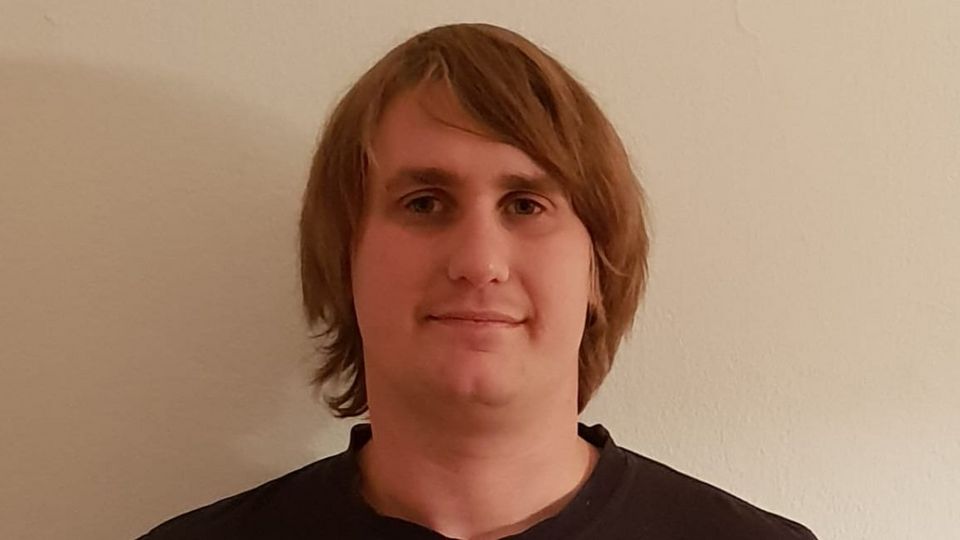
Stefan Breithuber
Graduate, works at KELAG Energie & Wärme GmbH
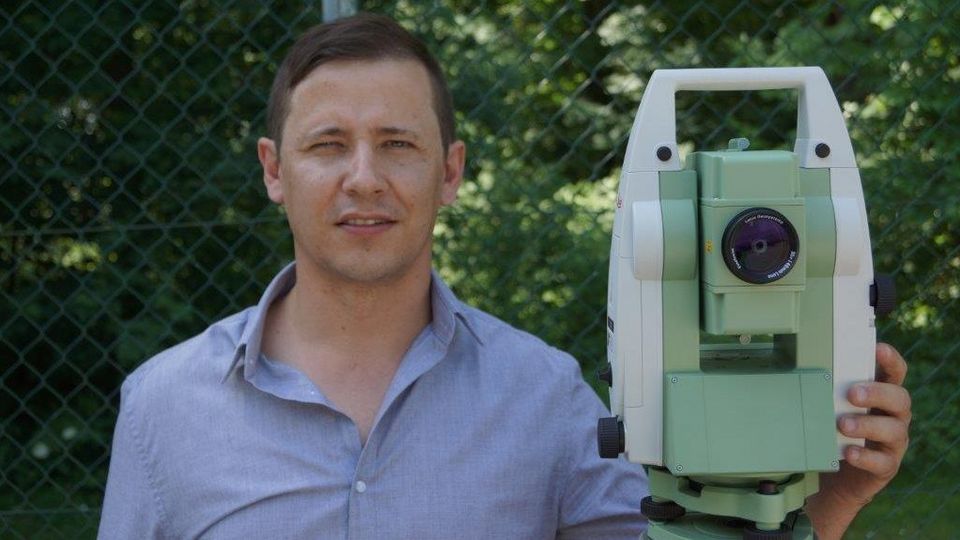
Emmanuel Blaßnig
Graduate, works in the city council of the provincial capital Linz

Dr.-Ing. Stefan Krampe
Managing Director TraffiCon
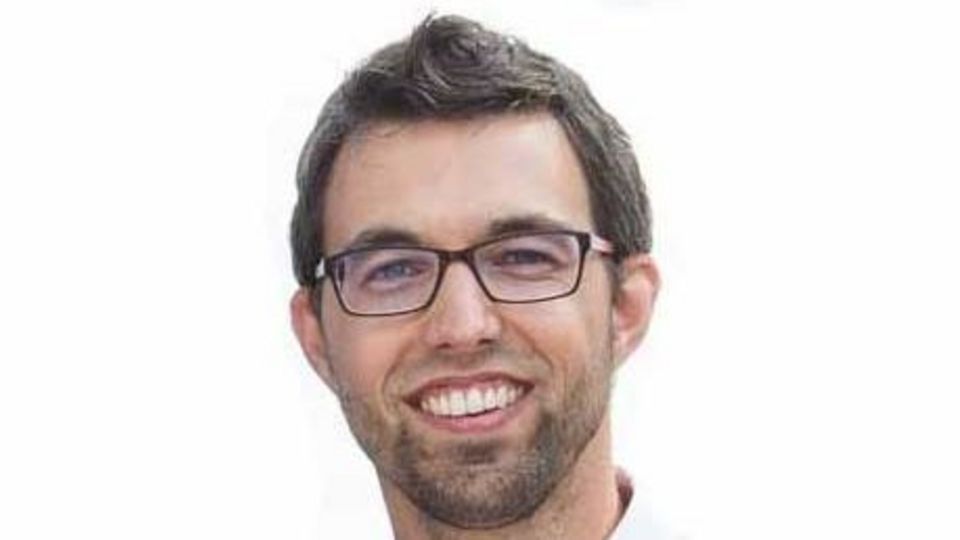
Bernhard Kosar
Graduate, works in the Department of Geoinformation and Real Estate at the Office of the Upper Austrian Government in Linz
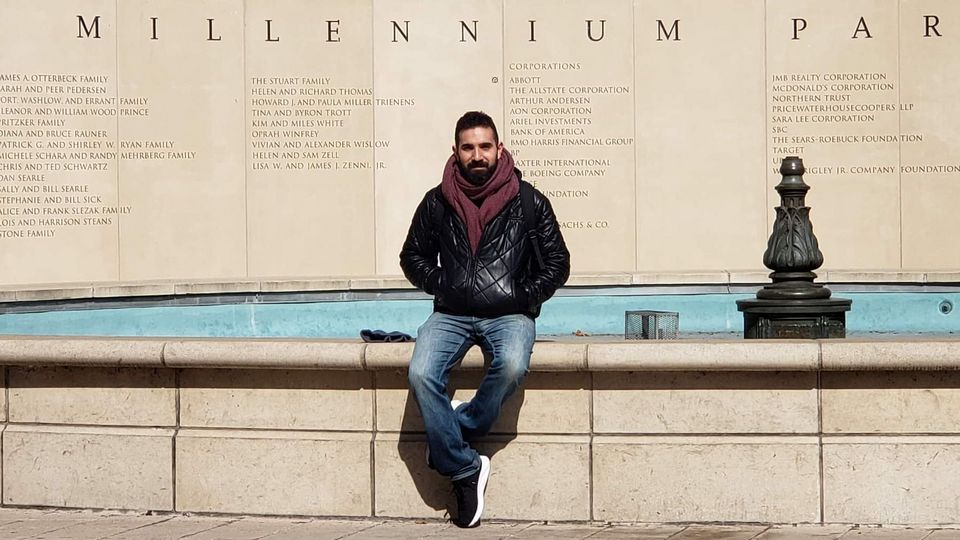
After achieving my BSc in Communication Engineering in Jordan, I came to FH-Kärnten in August 2018 to join the international Master’s program “Spatial…
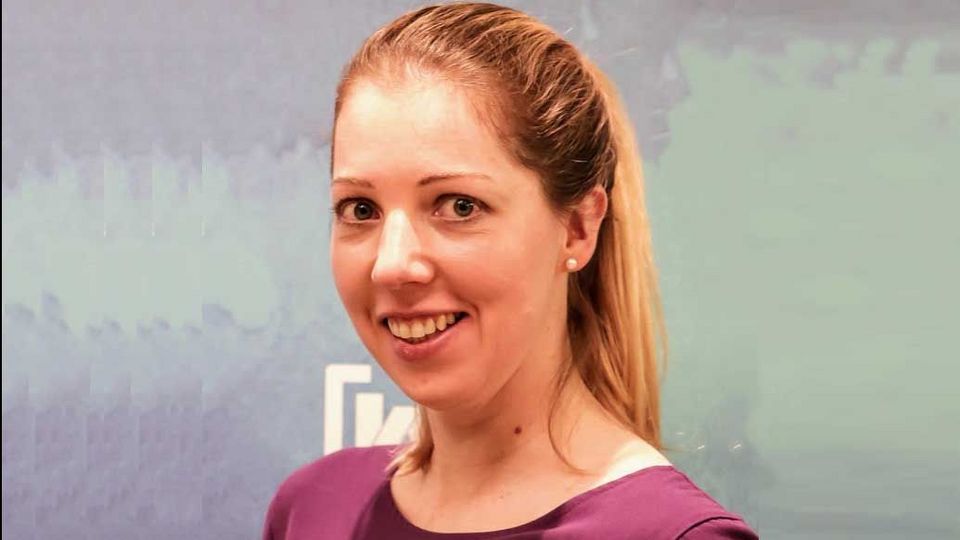
The combination of the two fields of interest geography and computer science led Anna Staber to the decision to study "Geoinformation" at the…
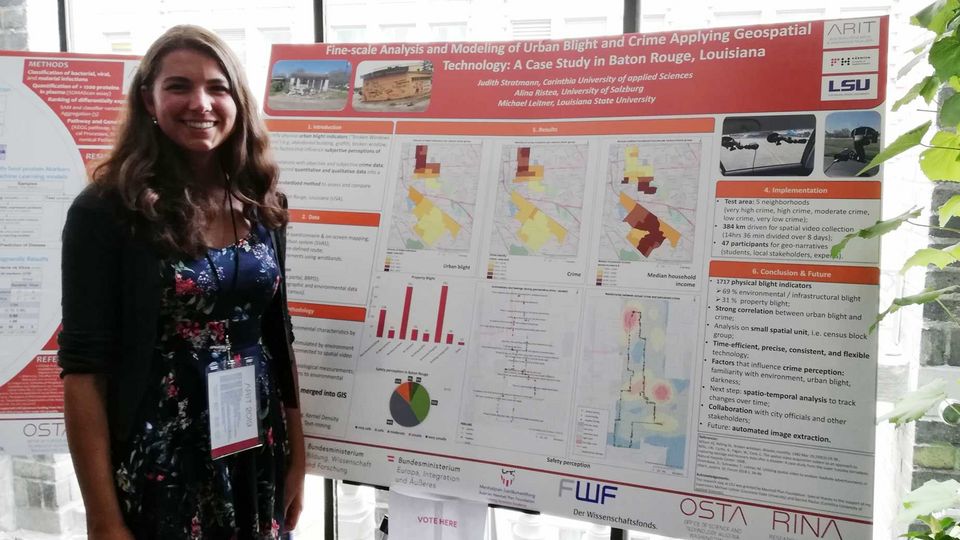
My experience during the Master’s program“Spatial Information Management” at CUAS
Time flies by. One year ago, in summer 2019, I graduated from…
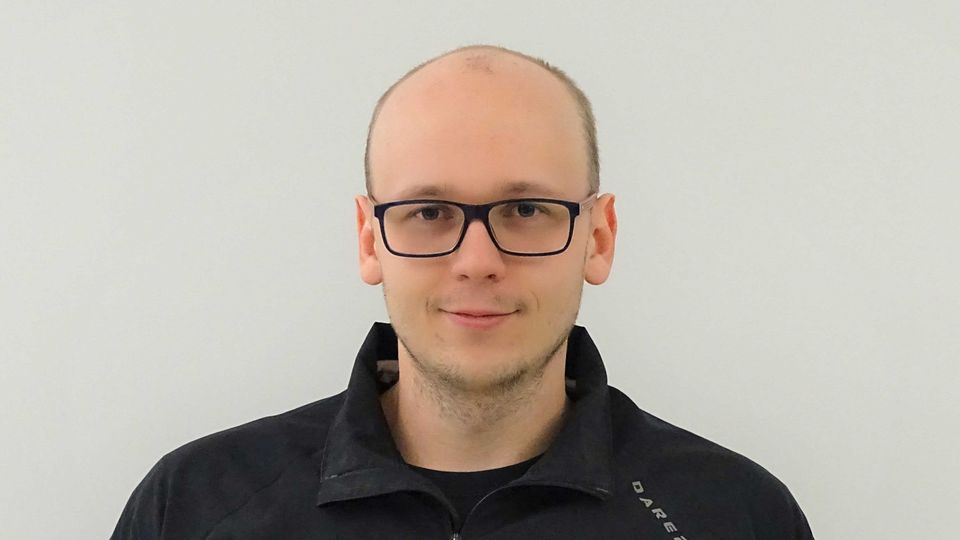
Fabian Kowatsch studied Geoinformation and Environmental Technologies at the Carinthian University of Applied Sciences from 2012 to 2015. In 2017 he…
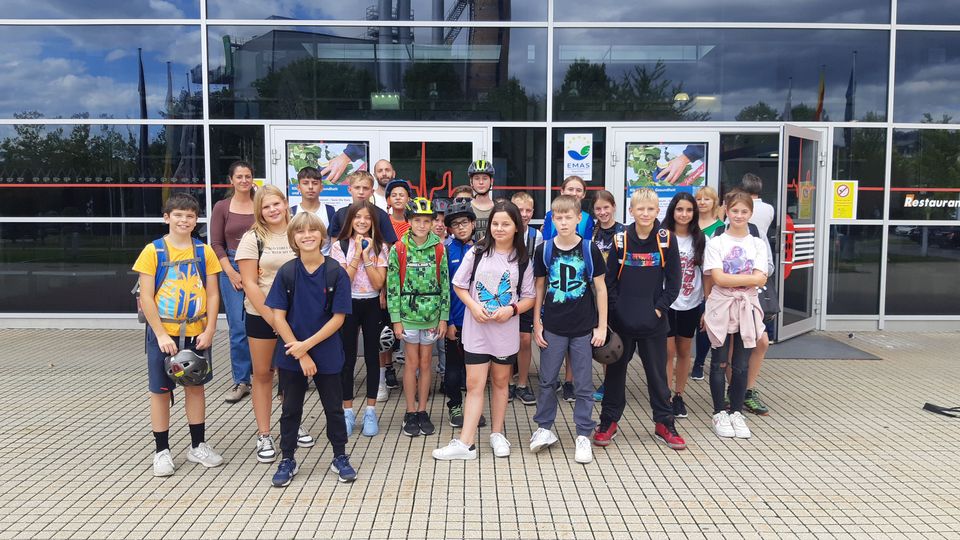
Am Mittwoch, den 20. September sowie Donnerstag, den 21. September 2023 besuchten die Klassen 3a und 2a der Sportmittelschule Lind ob Villach den…

Im FH talk, moderiert von Innovationsforscherin Gloria Bottaro, spricht Daria Strelnikova über ihre Forschungsarbeit am Studiengang Geoinformation und…
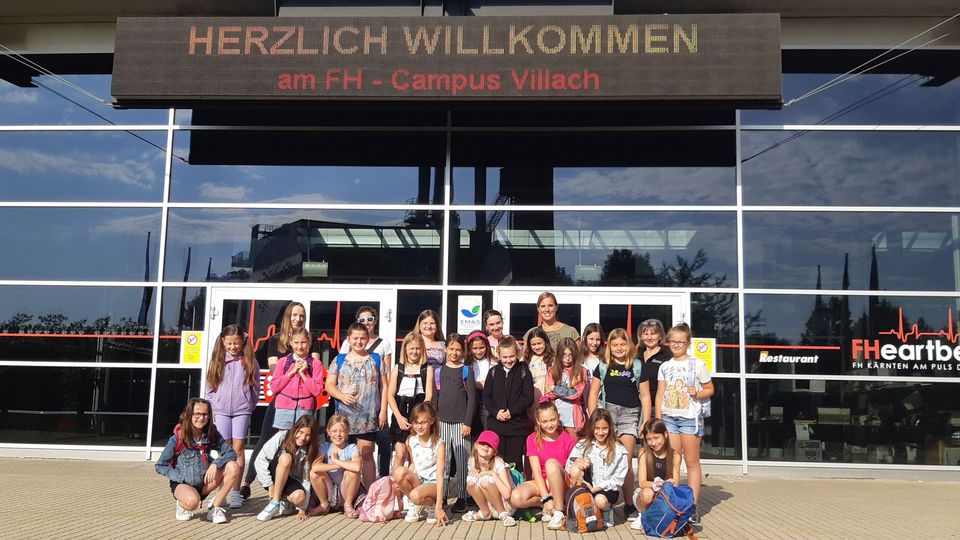
Mädchen tauchen in die spannende Welt der Technik ein“ – das ist das Motto der jährlich stattfindenden „Girls‘ Days“ an der FH Kärnten in den…

Spricht man mit Lukas Wolbank, wird einem das Ausmaß der Klimaerwärmung so richtig bewusst. Weniger Niederschläge, Trockenperioden gefolgt von…
In the mandatory professional internship, you will implement the knowledge you have acquired in your geoinformation studies and thus have already gained practical experience by the end of your education. The internship can be done worldwide and usually lasts 12 to 15 weeks.
Here is an overview of some companies and institutions that allow a professional internship: www.arcgis.com/index.html
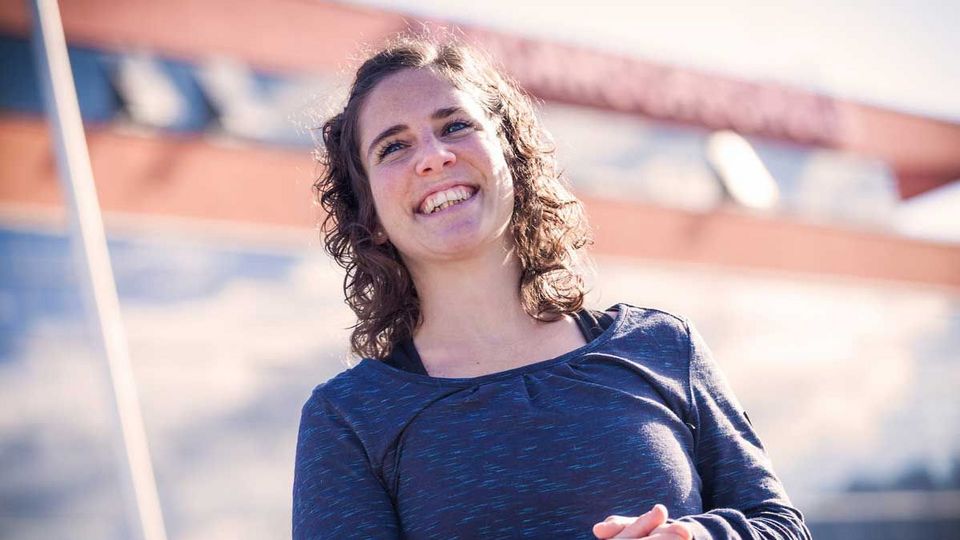
Ich konnte die Möglichkeit eines Auslandpraktikums bei der Kantonspolizei Zürich in der Schweiz nutzen.
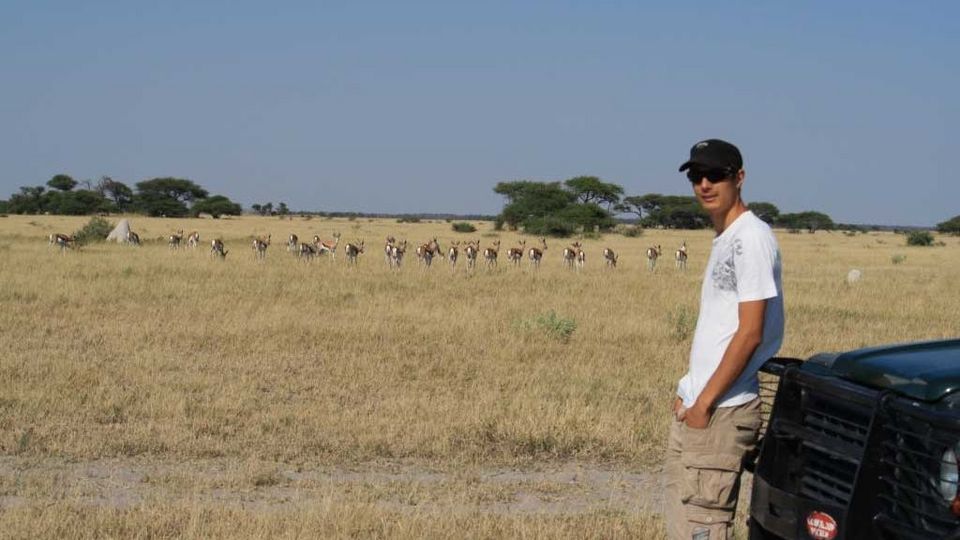
Während des 6. Semesters habe ich mein Pflichtpraktikum in Maun, Botswana, absolviert.
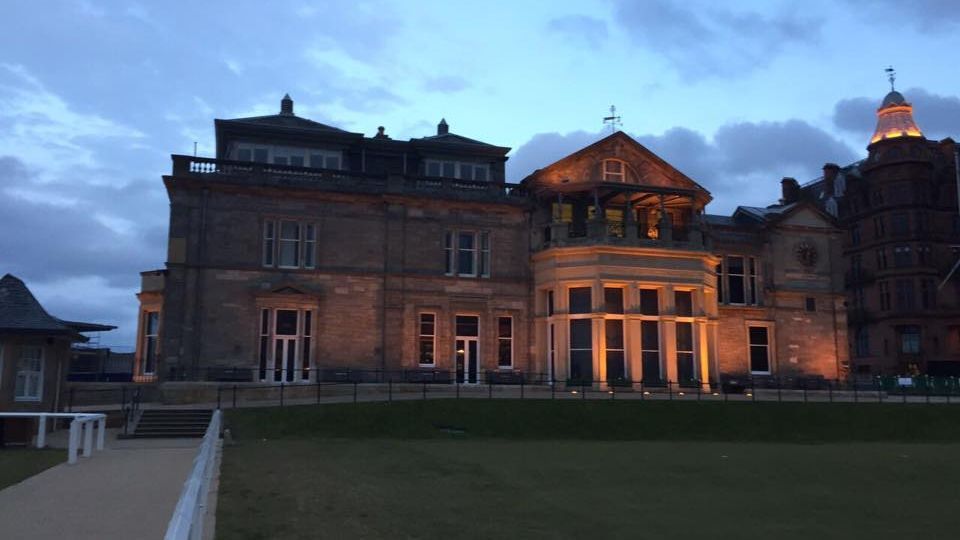
Unser zwölfwöchiges Berufspraktikum absolvierten wir am „Department of Geography“ der „University of St Andrews“ in Schottland.

Ich absolvierte mein Berufspraktikum am „Department of Geography“ an der „University of Canterbury“ in Christchurch, Neuseeland.
International visiting professors like Dr. Michael Leitner from Louisiana State University or Dr. Piotr Jankowski from San Diego State University deal with exciting and current issues in the field of geoinformation. We are also a strategic partner of the international GI_Forum conference (contact person Dr. Adrijana Car). Information on further numerous projects and cooperations can be found in our GI_Newsletter series: Edition 2019 | Edition 2018 | Edition 2017 | Edition 2015
Marshall Plan Scholarship
The Austrian Marshall Plan Foundation annually awards scholarships to students at Austrian and American universities for research stays with a focus on technology and natural sciences in the USA and Austria (minimum 3 months). Depending on the length of the stay, the scholarship amounts to up to 10,000 euros and is aimed at Bachelor, Master and PhD students in natural science subjects.
Students of the current study programme Geoinformation and Environmental Technologies have so far worked very successfully on international projects.
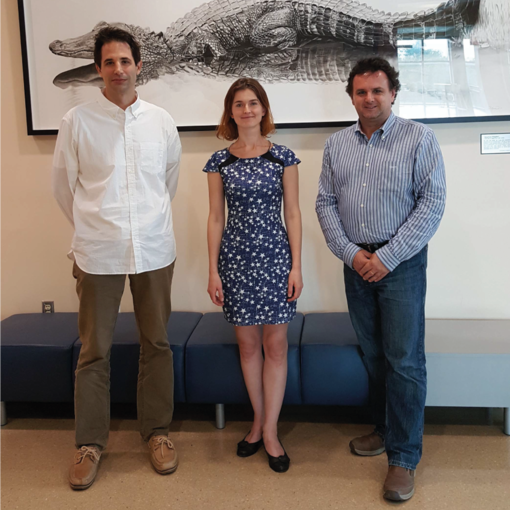
Die Analyse von GPS Daten, die mobile Fitness-Applikationen beim Radfahren aufzeichnen, stand im Mittelpunkt des Berufspraktikums von Dariia Strelnikova. Im Rahmen eines Marshallplan Stipendiums erhielt sie die Möglichkeit zu einem Forschungsaufenthalt in den Vereinigten Staaten. Gemeinsam mit einem Team der Universität Florida wurden die Ergebnisse über raumzeitliche Muster während der Aktivität am Fahrrad gesammelt um die Radweginfrastruktur zu verbessern.
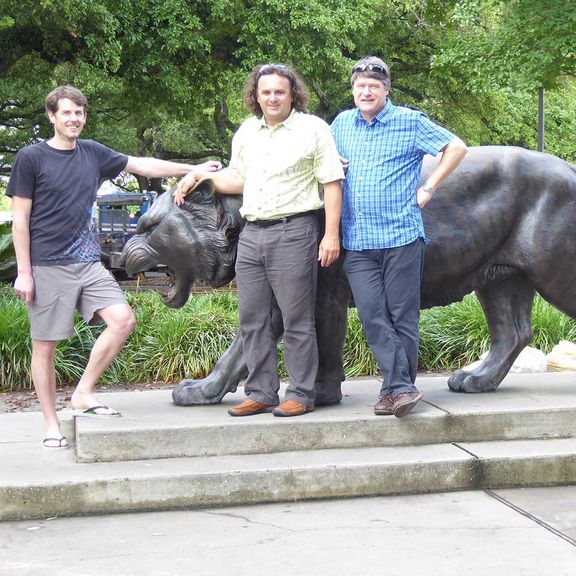
Mein Berufspraktikum im 6. Semester des Bachelorstudiengangs „Geoinformation und Umwelttechnologien“ habe ich von Februar bis Anfang Juni 2015 in den USA, in Baton Rouge, an der Louisiana State University (LSU) am Department für Geologie und Anthropologie absolviert. Mein Betreuer Dr. Michael Leitner ist dort als „Full-Time“ Professor in der Lehre und Forschung tätig und ermöglichte mir somit diesen großartigen Auslandsaufenthalt.
Das Ziel meiner Forschungsarbeit war es die drei wichtigsten statistischen Kriminalitätsvorhersagemethoden Hot Spot Analysen, Near Repeat Analysen und Risk Terrain Modeling miteinander zu vergleichen. Dabei wurden die Vor- und Nachteile der drei Analysemethoden aufgezeigt, um in weiterer Folge die passende Methode für die Stadtpolizei Wels auswählen zu können. Neben meinem Praktikum an der LSU hatte ich auch die Möglichkeit sehr viele neue und nützliche Kontakte zu knüpfen und Teile der Vereinigten Staaten kennenzulernen. Jedem dem die Möglichkeit für solch ein Praktikum geboten wird sollte die Chance im Ausland arbeiten oder studieren zu können auf jeden Fall nutzen.
As a student of the MSc program „Spatial Information Management“ (SIM), supported by the CUAS’ International Relation Office (IRO) and the Austrian Marshall Plan Foundation I had the opportunity to visit the University of New Mexico (UNM) in Albuquerque, New Mexico, U.S.A. My Marshall Plan grant resulted not only from a successful application but also from the years long cooperation between Dr. Gernot Paulus (SIM@CUAS) and Dr. Christopher D. Lippitt from the Department of Geography and Environmental Studies at UNM, both of whom supervised my thesis research.
During my stay, I worked on the quantitative comparison of nadir and oblique images, which is a part of my master thesis on the development of a multi-temporal phenological 3D model of vine. I benefited greatly from Dr. Lippitt’s extensive knowledge and experience, especially regarding remote sensing, while solving supposedly difficult problems related to image processing. Together with other incoming students I received a very warm welcome at the Department. We were introduced to all staff and had a tour of the campus and the city. I enjoyed everybody’s openness, prompt and easy communication. Aside from intense work on my project, I managed to do some sightseeing, mostly following the invitations from my colleagues. For example, I visited the Kasha-Katuwe Tent Rocks National Monument on the Pajarito Plateau, the inactive „Three Sisters“ volcanoes and the national museum of nuclear science & history. Given the high competence and experience of the staff, the friendly and respectful treatment of students, the campus amenities and the discourse and excursion offers, I would warmly recommend this research stay at the UNM in New Mexico to every student! Personally, I am exploring possibilities to return to the UNM to earn a doctoral degree.
Digitale Kriminalitätsanalyse: Wie moderne Geoinformationstechnologien dabei helfen, mögliche Ursachen für das Auftreten und die räumliche Verteilung von Verbrechen besser zu verstehen.
Im Rahmen eines interdisziplinären Forschungsprojektes untersucht ein internationales ForscherInnenteam des Departments of Geography & Anthropology der Louisiana State University in Baton Rouge (USA) und des Studiengangs Spatial Information Management an der FH Kärnten (Campus Villach) mit innovativen Geoinformationstechnologien mögliche Zusammenhänge zwischen der Verwahrlosung von Stadtteilen (engl.: „Urban Blight“) und dem Auftreten von Kriminalität. Die Untersuchungsgebiete liegen im Süden der USA in Baton Rouge (Louisiana). Das Team besteht aus Michael Leitner (Professor am Dept. of Geography & Anthropology an der Louisiana State University in Baton Rouge und internationaler Experte im Bereich der räumlichen Kriminalitätsanalyse); Judith Stratmann (Masterstudentin am Studiengang Spatial Information Management an der FH Kärnten), Alina Ristea (Doktoratsstudentin am Doktoratskolleg GIScience-Geoinformatics an der Universität Salzburg) und Gernot Paulus (Professor für Geoinformation an der FH Kärnten). Ziel dieses Projekts ist es, neue interdisziplinäre Forschungsmethoden wie Spatial Video Technology und Geo-Narratives anzuwenden, um den städtischen Verfall und den Zusammenhang mit Kriminalitätsraten und Kriminalitätswahrnehmung auf der Mikroebene von „Neighborhoods“ in Baton Rouge in Louisiana (USA) zu untersuchen.
Die beiden Karten in Abbildung 1 und 2 zeigen erste Ergebnisse dieser aktuell in Baton Rouge laufenden Studie; einerseits die Verteilungsdichte für Indikatoren des städtischen Verfalls (Abb.1) und andererseits der Kriminalität (Abb.2) in den Nachbarschaften Fairfields und Mid City in Baton Rouge. Die Projektergebnisse wurden im Rahmen einer wissenschaftlichen Poster-Präsentation auf dem GI_Forum 2019 vorgestell
After achieving my BSc in Communication Engineering in Jordan, I came to FH-Kärnten in August 2018 to join the international Master’s program “Spatial Information Management”. Being in this international space paved the way for a great experience. It was a delight to learn, integrate and build relationships with international communities especially in the very nice city of Villach.
I have learnt the key principles of GIS science and I was able to put my gained knowledge to work when I was granted the Marshallplan Scholarship to do my thesis “Comparison of Convolutional Neural Network Architectures for water fowl detection and classification” at the University of New Mexico, USA, from March to July 2020.
In September 2021, I joined SIENA Research Group as a junior researcher and since that time, I have been involved in projects that utilize Machine Learning and Artificial Intelligence in spatial and environmental applications. For example, I was involved in developing pipelines for automated bird detection from areal imagery, building an extensive dataset for building footprint from satellite images, developing automatic boats tracking system based on image processing, smart-floor analysis and visualization system, automatic insect recognition, and many projects more.
If I have learnt one thing here: it’s the fact that “Geo is everywhere and in everything” and gaining knowledge about how to best utilize such treasure opens the way to endless development and achievement possibilities.
It has been such a gratifying experience working on my research in the Physics/Astronomy and Interdisciplinary Science (PAIS) Department at the University of New Mexico (UNM). As Earth and Climate Change was the subject of my thesis, the Geography Department was very helpful to me as well. My host supervisor, Dr. Christopher Lippitt specifically challenges his staff to go beyond their normal comfort levels. During my time there, I have worked closely with Dr. Lippitt, who provided me with the resources and freedom to craft research projects aligned to my interests in answering the big questions like "where is this research going?", and "what else is out there worth a research effort?" I've been consistently pushed and motivated to come up with fresh research concepts.
I think this has given me the ideal environment to develop into a creative, informed, and autonomous researcher. The lab was equipped with everything I needed to conduct the experiments and collect all the empirical data I required for my research. Its atmosphere is friendly, approachable, and the instructors, students, and staff were very helpful and supportive.
Life in Albuquerque is affordable, and locals are always open to newcomers, especially students. Exploring its neighborhoods with locals is a great way to learn about its history and culture but also avoid crime-prone areas. The state of New Mexico offers a wide range of things to do and places to explore and enjoy. If you are an outdoor person, I strongly recommend applying for this position and seeing how magnificent nature there is.
Home Institution: Carinthia University of Applied Sciences, Villach, Austria
Host Institution: University of New Mexico, Albuquerque, New Mexico, USA
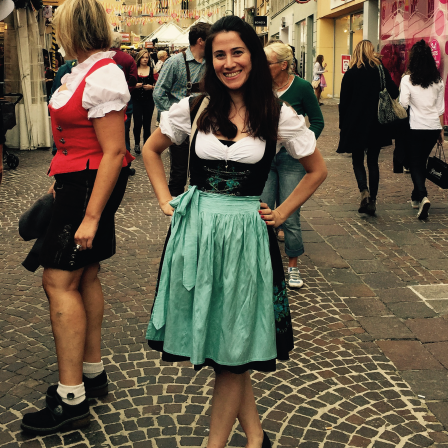
My proposal on “Application of Spatial Exploratory Global Uncertainty-Sensitivity Analysis for Flood Protection Scenarios” has been accepted from Marshall Plan Scholarship, so that my journey to Austria began on the 1st of June! I was pretty sure that it would be a rewarding summer in terms of both research and fun, and neither CUAS nor Villach falsified me.
I am currently a geography PhD student in a joint doctoral program between San Diego State University and University of California, Santa Barbara. I have been studying my PhD since 2013 and my major subject area is Geographic Information Science. Specifically, I am a research assistant in a National Research Funded project called “A Spatiotemporal Approach to Sensitivity Analysis in Human Environment Systems Models”. Align with this project; my main research area is uncertainty and sensitivity analysis (U-SA) for spatially explicitly models. Therefore, my proposed study in CUAS is focused on an environmental model, flood damage estimation, considering the importance of the model output and how effective it is in decision making process. Eco-hydrological modeling of flood damage assessment often employs spatially explicit models, which are prone to uncertainty in their input and output data. A modeling approach, which quantifies both uncertainty and sensitivity, is a mandatory step to increase the quality of decision making in spatially explicit models. This research on spatially-explicit models, aims to provide an effective tool for assessment of the quality in output and therefore leading an optimization for the land suitability and resource allocation problems. Considering the environmental conditions in Austria, this makes a suitable candidate region to implement the proposed research methodology.
During my stay in Villach, the technical meetings and discussing that I made with the faculty helped me to form my model and understand the existing conventional methods applied for flood damage estimation. Especially, the help and guidance of Dr. Gernot Paulus has a paramount importance in my research. Moreover, I also had chance to deal with another research subject with Christopher Erlacher which is quite parallel to my PhD subject interest and has very fruitful results. Therefore, these three months period help me to deal two different research problems with the generous support of CUAS faculty.
Besides involving in research, I was also happy to take the advantage of being in the center of Eastern Europe. Especially, being able to travel three countries in a day without having a jetlag was very enjoyable. I made short trips to Udine, Graz, and Salzburg since I enjoy the history and architecture in a city a lot. Moreover, I visited Ljubljana and Lake Bled in Slovenia for my birthday. Although I was alone, the beauty of the nature and foods cheered me up! In this summer, the most different experience in Villach was Kirchtag for me. It was a traditional festival where people eat special food and dance in their traditional clothes. I had also chance of trying one dress, thanks to my roommate. Finally, I finished my summer time in Budapest and Vienna, which are the best places to farewell the Austria and Europe.
I am grateful for my unforgettable memories in Austria, especially to the people that I met at FH and my roommates who helped me to survive and ease my life in Villach. I am pretty sure that those people will turn to lifelong friends.
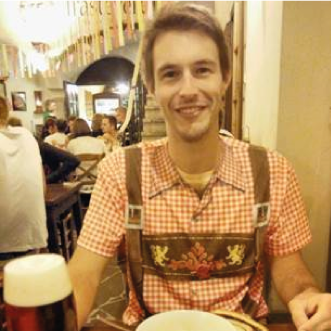
My three months at FH Kaernten have been both productive and enjoyable. I was able to use this time to create a simulation model of the potential trajectories of wolf recolonization of Austria from the ground up. It was a tremendous learning experience for me and it also yielded some interesting outputs and results. In addition, was able to find time to explore the region, cycling over a thousand km in the nearby countryside and travelling further afield during weekends (with trips to Innsbruck, Vienna, Italy, Slovenia, and the UK). I found the department in general, and Dr. Paulus in particular, to be extremely supportive and helpful in pursuing this new research, and I’m very thankful to the Marshallplan foundation for making it all possible.
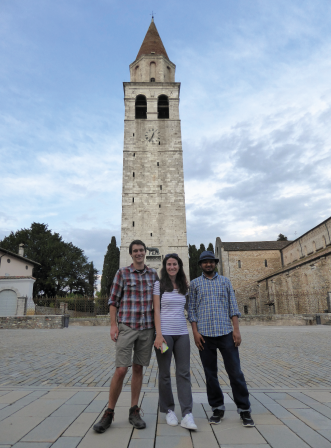
Based on the characteristics of ALTA platform and the need of three dimensional modeling, a method of 3D building or architecture modeling using the aerial images from ALTA platform has been assessed empirically. Firstly, we have captured oblique and vertical images of any building or architecture from the camera of ALTA plat-form through several missions in Villach, Carinthia, Austria. Secondly, several-angle and different altitude images including vertical images and oblique images captured by the ALTA platform were utilized for the detail measure of building dense point cloud, surface and texture extraction in 3D model reconstruction using different photogrammetric solutions.
These reconstructed 3D models are also visualized online taking 3D point clouds of them on potree-based 3D web visualization tool. It is demonstrated from the mission result that ALTA platform for low-altitude aerial photogrammetry can be used in the construction of 3D building production, fine modeling and visualization. The 3D point cloud reconstruction from 2D aerial images of the pilgrimage church of Maria Siebenbrünn is shown in figure 1.
Experience
It was really a great experience to work this kind of pragmatic research work and also great to have support from Austrian Marshall Plan Foundation during the accomplishment of this research work in Austria. My lead project supervisor Dr. Gernot Paulus, Professor, Department of Geoinformation and Environmental Technologies, Carinthia University of Applied Sciences (CUAS), Villach, Austria gave me encouragement to complete this work and participated actively and dynamically during the data acquisition of my work.
My co-lead supervisor of this project Dr. Naphtali David Rishe, Professor, School of Computing and Information Sciences (SCIS), Florida International University (FIU), Miami, FL, USA initiated this collaboration research work and monitored the progress of this work. Daniel SIchler, MSc student from CUAS gave me the support and company during data acquisition. The administrative and technical staff of the Geoinformation and Environmental Technologies department of CUAS provided me any required support during my stay.
Finally, I actually travelled to nearby locations of Villach, Austria for the first time and also I enjoyed the Marshall plan excursion for one day at the end of our stay to Italy and Slovenia. All in all, it was a great experience!
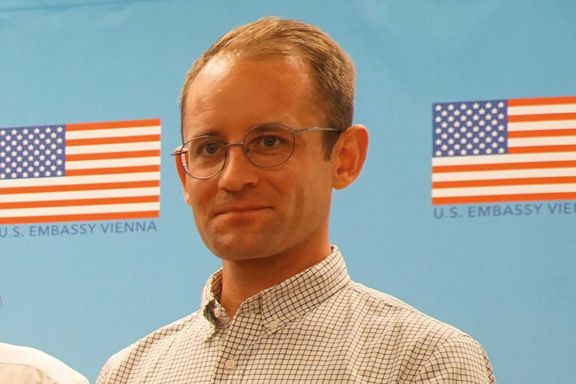
Since May, I have been a guest researcher at CUAS as a recipient of the Austrian Marshall Plan Foundation scholarship. The 70-year-old foundation has the mission of fostering collaborative learning between the United States of America and Austria. I believe it is more important now than ever to maintain these scholastic bonds and knowledge bases through a cross-cultural lens, and I am happy to be a part of that endeavor. Under the guidance of Dr. Gernot Paulus, I have worked for the last three months to develop a project that utilizes high-tech drone imagery to model hydrologic phenomena, hopefully with implications in the realm of resilience and human equity. Our semi-regular talks have opened up new ways of thinking and tackling problems.
The learning opportunities at CUAS are numerous, with a colloquium series, an open-format geoinformatics lab, and excursions around Carinthia and greater Austria. The university also funded my attendance at the GI-Forum Conference in Salzburg, where I was able to meet fascinating geographers and learn about the array of research that dominates our robust field. Of course, my time has not been entirely research and school – I have been able to travel (this is my first time to Europe) and experience the rich heritage of Carinthia through the Kirchtag Festival, walking tours, hikes, bike rides, and near-daily visits to one of the many lakes within walking distance. And while Austria provided little respite from the Chihuahuan Desert summer heat in my home state of New Mexico, I have been able to marvel at the stunning beauty of the land here. I will surely cherish this time for years.
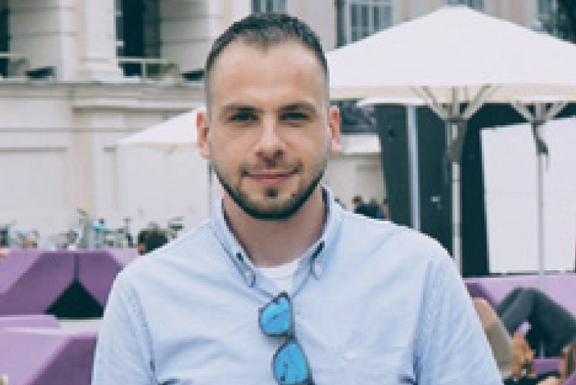
My research group at the University of Florida has close ties with the Geoinformation Program at CUAS. Many CUAS students have visited my lab in Fort Lauderdale throughout the last few years to work on interesting projects involving novel data sources such as Twitter or Strava. This year, however, we decided to change the direction of visits and I applied for the Marshall Plan Scholarship to conduct part of my research in Austria. This program supports academic exchange between Austrian and U.S. universities and I am more than happy to have been one of the 2018 awardees and to have spent an enjoyable three months in Villach.
I have a diverse background in geospatial sciences, and lately, my research interest turned towards understanding user behavior in different online communities. My stay at CUAS was organized around the topic of “Identification of activity patterns for individual users across multiple VGI and social media platforms”. In the era of “big data” there are endless potential data sources on the internet that can be put into use and help us answer a number of research questions. You can think of social media services such as Twitter, Instagram, Flickr, Snapchat, or even popular games like Pokémon Go. These services all have a spatial dimension, which makes them particularly exciting from a geospatial point of view. This is a relatively new and exciting research area that involves diving into previously unexplored territories. On the other hand, this is also one of its biggest challenges. I am currently in the last phase of finishing my PhD.
In addition to the challenges originating from my research area, the process of getting a PhD also comes with a lot of stress. One needs to find time to do research, publish papers, present at conferences on top of fulfilling all the requirements that are required for the degree. I found that my visit at CUAS was exactly what I needed to tackle these. Carinthia has a great many things to offer that helped me relax between long hours of work and to start every day refreshed. I enjoyed every bit of my stay. I will never forget my biking trips around Faaker See and Ossiacher See, the random visits of cafés in Velden, or my morning commute to campus along the Drava river. While living in the middle of a major U.S. metropolitan area also has its perks, I believe that productivity levels can benefit from a change in our environment for a short while. The peace and quiet in Villach and the beautiful sight of the Alps certainly increased mine.
All in all, the Marshall Plan Scholarship is an excellent opportunity for students, and I encourage you to apply. Gaining experience in a foreign country, working on interesting projects can boost your future career. You will learn useful skills, make meaningful connections that are all essential for your development. And above all, you will make unforgettable memories.
Not many people think of Austria as a place to study monkeys but that is exactly what we did. Over the summer in collaboration with Carinthia University of Applied Science and San Diego State University with support from the Marshall Plan Foundation, we investigated the ability of drones equipped with thermal sensors to detect monkeys in forested areas.
To begin our research, we started by testing the ability of sensors to detect large primates in an open area (people standing out in a field) and then slowly refined the process until we were able to transfer our process to fly over Abenteuer Affenberg, where we conducted flights over the park with the hope of being able to detect the Japanese macaques living there. One of the concerns we had going into this final phase of testing was that the monkeys would be alarmed by the drone fly overhead, which would appear similar to one of their main predators. Luckily, the monkeys appeared to not be concerned at all with the drone buzzing overhead. Hence, we were able to conduct our flights without worry that we were causing the monkeys distress and were able to collect some interesting data for analysis. While the processing of the data is still ongoing, the preliminary results are positive and will hopefully lead to a more streamlined process to gather population data of primates.
We expect our approach to be beneficial to both the researchers and the wildlife as it is less invasive for the animals and more cost and time effective for the researchers. Once the data collected has been fully explored and we have determined the applicability of the process, the next hopeful progression of this research is to transfer what we learned in to the forests in the Fanjingshan National Nature Reserve in China to help conservationists monitor and protect the endangered Golden snub-nosed monkey. We would like to thank the CEO of „Abenteuer Affenberg“, Svenja Gaubatz and the scientific director Dr. Lena Pflüger for their great support.
FH-Prof. Dipl.-Ing. Dr. techn.
Christian MenardFH-Prof. Dipl.-Ing. Dr.
Gerald GruberMag.a
Michaela Gollner, MSc.Mag.a
Sandra Filipic-KlinarDI (FH)
Michael DorferIng.
Peter GrabnerMag. Dr.
Ralf BlahaDipl.-Ing. (FH) Dipl.-Ing.
Markus HaringDipl.-Ing.
Günter ObiltschnigDI
Lukas Sommeregger, BScDipl.-Ing. Dr.
Heinz Stanek, MBADr. med.
Martin StultschnigIng.
Michaela Wartbichler
Klagenfurt combines joie de vivre, nature and culture. The city of just over 100,000 inhabitants on Lake Wörthersee is a recreational area that fulfils every wish. Slovenia and Italy are not far away, the mountains are within reach. Klagenfurt's cultural scene is also vibrant, with clubs, stages and museums. The Old Square with its many shops, restaurants and cafés is the centre of city life. The idyllic Lendkanal connects the city with the lake and, like Kreuzbergl, is a popular destination for amateur sportsmen and nature lovers.
The campus in Primoschgasse has perfect transport connections - a separate bus line stops directly in front of the FH on the Südring. The view from the roof terrace onto the mountain panorama surrounding Klagenfurt offers the perfect space for relaxing breaks.
Explore Campus Klagenfurt–Primoschgasse on a 360° Tour.
coming from the west (from A10, A11) along the southern motorway A2:
Exit Klagenfurt/Wörthersee (Minimundus), along Südring for about 7 km, turn left at the Südring/Gerberweg intersection (BP gas station), after 150 m turn right to FH Kärnten - Standort Klagenfurt, Primoschgasse 10.
Coming from the east along the southern motorway A2:
Exit Klagenfurt-Ost, turn into town (left), direction Klagenfurt-Zentrum after 1 km on Völkermarkterstraße (right) after about 2.5 km turn left at the intersection into Südring (Kika), at the intersection Südring/Gerberweg (BP gas station) turn into town (right), after 150 m turn right to FH Kärnten - Location Klagenfurt, Primoschgasse 10.
Coming from the south along the Rosentalerstrasse B91:
turn right at the intersection Rosentalerstrasse/Südring (PSK) into Südring, along Südring for about 2.5km. turn left at the intersection Südring/Gerberweg (BP gas station), after 150 m turn right to FH Kärnten - Location Klagenfurt, Primoschgasse 10.
Coming from the north along the St. Veiterstrasse B83:
Turn left, follow St. Veiterring into Völkermarkterring (right) southbound, extension Völkermarkterring into Lastenstraße until you reach the railway underpass (approx. 800m), extension Lastenstraße into Gerberweg, after approx. 750m turn left to FH Kärnten - Location Klagenfurt, Primoschgasse 10.
Klagenfurt main station, footpath to Südpark along Bahnstraße (direction east), footpath along Gerberweg to Primoschgasse to FH Kärnten - location Klagenfurt, Primoschgasse 10 (direction south), duration from main station about 20 min.
Airport Klagenfurt, by taxi to the FH Kärnten - location Klagenfurt, Primoschgasse 10 (duration about 20 min), or by public utility bus to Heiligengeistplatz, change to line 40, 41, 42, 70 or 71, duration from airport about 50 min.
Primoschgasse 8–10
9020 Klagenfurt, Austria
+43 5 90500 3101
engineering-it[at]fh-kaernten[dot]at
+43 5 90500 3301
gesundheit-und-soziales[at]fh-kaernten[dot]at
Erkunden Sie den Campus Klagenfurt–Primoschgasse bei einer 360° Tour.
The Villach region combines tradition, cosmopolitanism and quality of life with the advantages of an innovative business location. Villach, a small town with about 60,000 inhabitants, is an international high-tech location with groundbreaking cooperation between science and industry and is also increasingly developing into a start-up town.
Situated directly at the intersection of three cultures, Villach, situated on the Drava river, is an important traffic junction in the Alps-Adriatic region. This special geographical location and the beautiful landscape around Villach and in the federal state of Carinthia have made the region a popular holiday destination for generations, further beyond the borders. The drinking water quality of the lakes and the particularly clean air make Villach and its surroundings an environmental paradise.
In addition to its geographical advantages, Austria also leads the world in terms of its social and health care system and is considered a particularly safe, prosperous and liveable country.
Despite the above-average prosperity and the comprehensive state social benefits, Villach compares favourably with many international destinations. The "small town bonus" comes into its own here and makes everyday life affordable.
Explore Campus Villach on a 360° Tour.
Make a virtual walk through the Science & Energy Labs – T10.
Motorway exit Wernberg, then on the B 83 approx. 2 km in the direction of Villach, after the Villach town sign the B83 passes under the A2 motorway, and then immediately right the first exit in the direction of MAGDALENEN SEE. Following the signs for Magdalenen See, the road leads through a small wooded area, always follow the road, after an S-curve past Magdalenen See (left) always straight ahead, cross the southern railway line and go uphill directly into the centre of St. Magdalene. Turn right at the top of the hill, down the road, the grounds of the technology park are already visible to the south, the chimney of the combined heat and power plant, and directly in the sharp right-hand bend turn left onto the grounds of the technology park.
Motorway exit Villach/Ossiacher See, then approx. 2 km in the direction of Villach, on the right is Gasthof Seehof, on the left is Lake Vassach, continue on the B33 left in the direction of east, Wernberg, Klagenfurt, always follow the B33, after approx. 4 km turn right in the direction of Magdalenen See. The road leads through a small forest, always follow the road, after an S-curve past Lake Magdalenen (left) always straight ahead, cross the southern railway line and go uphill directly into the centre of St.Magdalen. Turn right at the top of the hill, down the road, the grounds of the technology park are already visible to the south, the chimney of the combined heat and power plant, and directly in the sharp right-hand bend turn left onto the grounds of the technology park.
The bus company Dr. Richard runs from Villach city to the FH in about every 15 minutes. The timetables are coordinated with the timetables of the ÖBB.
Europastraße 4
9524 Villach, Austria
+43 5 90500 7700
villach[at]fh-kaernten[dot]at
Explore Campus Villach on a 360° Tour.
In order to be admitted into a bachelor degree program at the Carinthia University of Applied Sciences at least one of the following criteria must be fulfilled:
Moreover, there are degree program specific additional prerequisites as well as more comprehensive information regarding admissions on the individual web pages of the corresponding degree program. The German University of Applied Sciences (Fachhochschule) entrance qualification certificate is only valid as an admission prerequisite for an Austrian UAS/FH bachelor degree program when combined with an applicable vocational certificate.
Persons in their last year of school may apply for a study place in a bachelor degree program before taking their secondary school-leaving exams by submitting their most current secondary school grade/marks report. The secondary school-leaving certificate must be submitted during the registration process at the beginning of the semester.
In order to be admitted into a master degree program at the Carinthia University of Applied Sciences at least one of the following criteria must be fulfilled:
Persons in their last semester of their bachelor degree programs may apply for a study place in a master degree program by submitting their most current transcript of records. The completion of the bachelor degree program certificates must be submitted during the registration process at the beginning of the semester.
####ContentToReplace####
Before enrolment in a degree program at the Carinthia University of Applied Sciences, a learning agreement is concluded between the prospective student and the Carinthia University of Applied Sciences.
This contract defines the rights and obligations of the student and the Carinthia University of Applied Sciences.
The rights and obligations of the student at a glance:
The learning agreement is sent electronically to applicants who have been accepted onto a degree program. In addition to the electronic consent to the learning agreement, the timely payment of the tuition fee and the Austrian Students´ Union fee is a prerequisite for admission to the degree program.
Significant legislative basis for a UAS degree program in Austria can be found here:
FHG - Federal Act on University of Applied Sciences Degree Programs (in German only)
HS-QSG - Act on Quality Assurance in Higher Education
Regarding the accreditation of previously gained academic knowledge through courses and/or exams taken at other institutions of higher education, the respective degree program administration/director will use the principle of ‘course per course relevant accreditation.
The equivalency of the previously taken courses in terms of content and scope to the offered courses in the degree program will be determined by the degree program administrator/director. If an equivalency is determined to exist, then those courses passed with positive marks/grades will be recognized and accredited. Additional examination of academic knowledge in these cases is not foreseen.
Specialized knowledge and relevant experiences acquired through professional and on-the-job experience may also be considered for accreditation for relevant courses. In cases of accrediting professional experience for course credits, additional examinations may be carried out if applicable.
Applications for accreditation are to be submitted directly to the Program Director no later than the start date of the relevant study course(s).
The student must decide where s/he will spend the semester abroad (i.e., a partner university) and will need to coordinate with the responsible Departmental International Coordinator concerning the necessary requirements.
Before the student spends the semester abroad, s/he is required to submit a completed Learning Agreement. This document contains all the courses the student will take abroad and will be recognized at CUAS once s/he finishes the courses successfully. The courses should correspond as much as possible to the courses offered in the curriculum of the student’s CUAS study program in the relevant semester in content and semester hours. It is highly recommended to students to take 30 ECTS credits abroad.
The Learning Agreement is signed and approved by the individual student, the host institution and the program director of the study degree program or a designated faculty member at CUAS.
The Learning Agreement is a declaration of the courses which are to be taken abroad and is not valid as an official recognition document by Austrian law. Therefore, the document is to be linked to the official document “Antrag auf Anerkennung / Application for Accreditation” for academic studies abroad.
During the first four weeks of the study abroad semester the student is allowed to change the Learning Agreement. For example, previously selected courses do not take place or overlap. The host institution and CUAS must agree upon the courses to be changed. If this is approved, the changes must be listed separately on the Learning Agreement (section “Changes to the original Learning Agreement). Afterwards the document is signed and approved by the individual students, the host institution and the program director of the study degree program or a designated faculty member at CUAS.
After the semester abroad the courses taken abroad will be recognized at CUAS. Therefore, the original Transcript of Records from the host institution and the legally valid document “Antrag auf Anerkennung / Application of Accreditation” (which is linked to the Learning Agreement) are obligatory. The student lists on the document the successfully finished courses abroad. After the recognition process is positively completed, the CUAS Transcript of Records will contain those courses.
In cases where the semester abroad is not completed successfully, the Departmental Coordinator and program director of the relevant study degree program will determine on an individual basis if and what courses will be accredited and what a student can do to make up those missing credits which were not accredited.
Detailed information about a semester abroad
For further questions please contact the International Relations Office.
Degree programs at University of Applied Sciences fundamentally only offer a limited number of study places.
In the framework of the application process each applicant will carry out an interview which will influence the allocation of the study places. Additionally, specific degree study programs may require written application tests as well as content-specific/technical aptitude tests. Detailed information regarding the degree program specific application requirements are provided on the degree programs’ web pages.
Repetitive applications for a study place at the same study degree program (e.g., in the following year) is generally allowed; however, the entire application process will start anew and candidates must resubmit all documents and carry out all steps again.
Carinthia University of Applied Sciences reserves the right to levy a surety of EUR 363.36 from the applicant in case of doubt on the authenticity or correctness as regards content of the documents proving the fulfillment of the admission requirements or in case that the documents are not sufficient for a decision on the fulfillment of the admission requirements in accordance with § 4 para. 5a FHG. This surety will be reimbursed to the applicant if the review has proved the authenticity and the correctness of the documents and the fulfillment of the admission requirements.
Im Rahmen des Aufnahmeverfahrens zum Studiengang wird die Eignung und Motivation für das jeweilige Studium erhoben. Die Eignungsfeststellung zum Studiengang Geoinformation & Umwelt findet in mündlicher oder schriftlicher Form statt. Anschließend stehen im Aufnahmegespräch (ca. 30 Minuten) Motivation, Engagement und Zielstrebigkeit in Bezug auf das gewählte Studium im Vordergrund. Es besteht auch die Möglichkeit ein Portfolio (Multimediatechnik) oder ein Maturaprojekt – sofern vorhanden – vorzustellen. In der schriftlichen Einladung zum Aufnahmegespräch erhalten die BewerberInnen eine Information zum genauen Ablauf.
Detailed information about application deadlines can be found at the websites of the respective degree programs!
Carinthia University of Applied Sciences accepts both exchange students from partner institutions and so-called ‘Free Mover’ students. The decision to accept Free Movers is made on an individual basis by the relevant Degree Program Director. In the first case an official nomination (via e-mail) from the partner institution is necessary. After the nomination the student will be provided information regarding the application procedure.
Free Movers may apply directly.
Detailed information and deadlines
In order to register as a student at CUAS, each student must fulfill the following:
The enrollment periods for each degree program will be announced in advance to all applicants.
The examination regulations are an integral part of the education contract between the student and Carinthia University of Applied Sciences. It is also available to students and lecturers on the intranet.
Exams are graded according to the FHG [Federal Act on University of Applied Sciences Degree Programs]) § 17 (1), in the Austrian Grading System:
Austrian grading scheme | Definition |
1 | EXCELLENT: |
2 | GOOD: |
3 | SATISFACTORY: |
4 | SUFFICIENT: |
Successfully completed | Positive Leistung, wo eine genaue Differenzierung nicht tunlich ist. |
5 | UNSATISFACTORY: |
Not completed | Negative performance, where a strict differentiation is not adequate |
Recognised | Transfer credits for courses with equivalent learning outcomes |
The final bachelor's and master's examinations before a committee are graded according to FHG (Federal Act on University of Applied Sciences Degree Programs) § 17 (2) in the following grading scale:
In applying this grading system, it has to be noted that the grades “Pass with merit” and “Pass with distinction” are reserved exclusively for an examination performance clearly exceeding the level of performance required to pass these final exams.
Please note: This part of the Website is only available in German.
Die Nostrifizierung ist die Anerkennung eines ausländischen Studienabschlusses (Ausbildung im tertiären Bereich/an Hochschule/Universität) als gleichwertig mit dem Abschluss des inländischen Bachelor- bzw. Masterstudiums an der FH Kärnten. Die Nostrifizierung an der FH Kärnten kann nur erfolgen, wenn ein mit dem ausländischen Studienabschluss gleichwertiger Studiengang an der FH Kärnten eingerichtet ist und sofern die Nostrifizierung zwingend für die Berufsausübung in Österreich notwendig ist (z.B. reglementierter Beruf). Ein nostrifizierter akademischer Grad entfaltet dieselben Rechtswirkungen wie ein im Inland erworbener akademischer Grad.
Innerhalb der Europäischen Union (EU) bzw. des Europäischen Wirtschaftsraumes (EWR) ist eine Nostrifizierung nicht zwingend erforderlich und daher auch nicht möglich. Die Anerkennungsentscheidung von europäischen Ausbildungen in einem reglementierten Beruf (z.B. im Bereich der medizinisch-technischen Dienste, Hebammen und Gesundheits- und Krankenpflege) erfolgt in Österreich durch die zuständige Behörde (das für Gesundheit zuständige Ministerium bzw. Landesregierungen).
Auszug aus: nostrifizierung.at
Nostrifizierungsansuchen können nur für Studienabschlüsse eingebracht werden, welche mit dem Studienangebot der FachhochschuleKärnten übereinstimmen.
Die Nostrifizierung ist ein Verwaltungsverfahren an einer Universität bzw. Fachhochschule, die an bestimmte Voraussetzungen gebunden ist.
Der/Die Antragsteller/in muss nachweisen, dass die Nostrifizierung für seine/ihre angestrebte Tätigkeit in Österreich eine zwingende (siehe: „Was ist vorzulegen?“) Voraussetzung ist. In allen anderen Fällen obliegt die Bewertung des ausländischen Studiums ohnehin dem/der Arbeit- oder Dienstgeber/in.
Die Nostrifizierung kann an jeder Universität bzw. Fachhochschule, an der ein vergleichbares österreichisches Studium eingerichtet ist, beantragt werden. In vielen Fällen kommen daher mehrere Universitäten bzw. Fachhochschulen in Betracht. An welcher davon der/die Antragsteller/in in einem solchen Fall das Verfahren beantragt, bleibt seiner/ihrer Wahl überlassen. Der gleiche Nostrifizierungsantrag kann jedoch nur an einer Hochschule eingebracht werden.
Siehe: Notwendige Anlagen zum Antrag auf Nostrifizierung
Die Nostrifizierungstaxe beträgt derzeit EUR 150,00 und ist im Voraus zu entrichten. Dazu kommen Gebühren und Verwaltungsabgaben. Mehr Informationen unter Anlagen zur Nostrifizierung.
Kriterien der Überprüfung sind Inhalte, Umfang und Anforderungen desjenigen österreichischen Studiums, mit dessen Abschluss die Gleichwertigkeit beantragt wird. Wenn einzelne Voraussetzungen nicht zutreffen, können diese als außerordentliche/r Studierende/r absolviert werden. Sämtliche Bedingungen werden mit Bescheid vorgeschrieben. Wenn der/die Antragsteller/in alle zusätzlichen Bedingungen erfüllt hat oder wenn keine Bedingungen vorgeschrieben wurden, stellt die zuständige Stelle die Nostrifizierung fest.
..., weil die Unterschiede zum österreichischen Studium zu groß sind, kann um Zulassung zum österreichischen Studium angesucht und nach erfolgter Zulassung die Anerkennung von Prüfungen aus dem ausländischen Studium, soweit sie den österreichischen gleichwertig sind, erfolgen. Danach kann das österreichische Studium fortgesetzt und abgeschlossen werden.
Auszug aus: Wie-Verläuft-eine-Nostrifizierung
The European Credit Transfer and Accumulation System (ECTS) is a student-oriented system to accumulate and transfer different study credits.
The ECTS is one of the main characteristics of the Bologna Process and is used within the European tertiary system to allow universities and other institutes of higher education to recognize and accredit students’ previous post-secondary coursework. Moreover, this allows students to accumulate credits from different institutions as well ensure that their tertiary degrees are recognized internationally. Thus, the ECTS-system regulates not only student mobility within Europe but also the admission to institutes for further studies.
The system is based upon the transparency of defined learning outcomes and learning processes. The acquisition of experience and knowledge is made transparent through the defined learning outcomes in the course description, the corresponding curriculum module and the degree program’s entire curriculum; this significantly contributes to quality assurance.
ETCS credits are calculated based upon a student’s workload, which in normal cases is necessary to pass a course successfully.
The learning outcomes describe what students should know, understand and be able to do after the successful completion of a learning process. The work load defines the amount of time typically necessary for all learning activities (e.g., lectures, seminars, projects, lab exercises, self-study, exams) in order to achieve the expected learning outcomes.
Within the European tertiary system, a semester is assessed to have 30 ECTS credits and an academic year 60 ECTS credits. The workload for an academic year ranges between 1.500 and 1.800 hours. In Austria, one ECTS credit is equivalent to a workload of 25 real hours.
The Learning Agreement (an agreement to accredit courses completed in a semester abroad) encompasses a listing of all the courses/modules/learning units that a student is to attend and complete at the partner university during the semester abroad. The courses’ ID-numbers and the ECTS credits to be transferred are listed in this document as well. When a ECTS credit transfer is to take place, then the learning agreement must be signed and approved by all three parties involved before the semester abroad: the student, the host institution and the sending institution. It is possible to make amendments to the learning agreement four weeks after the begin of the semester abroad.
The document Confirmation of Stay (Aufenthaltsbestätigung) confirms the actual stay of students at the host institution and is normally issued by the International Relations Office. The document may be issued by the host institute’s International Relations Office at the earliest two weeks before students abroad depart back to their home countries. This document is mandatory for Erasmus+ students.
The Transcript of Records (Datenabschrift) provides an overview of all study courses (completed courses/modules, grades/marks and the number of achieved ETCS credits). The ToR provides a proof of courses successfully completed and thus is very useful for student mobility (before the semester abroad, the ToR can be provided to the host institution and after the semester abroad, it provides the foundation for the recognition/accreditation of courses completed abroad at the sending institution).
The Diploma Supplement (Diplomzusatz) contains a standardized description of a completed degree program. The diploma supplement aims to improve the overall international transparency of degrees as well as to serve as a document for the recognition of academic and professional qualifications.
Infos unter www.fh-kaernten.at
For payments within the additional period, the tuition fee increases by 10%. Registration is only possible after receipt of payment at the account of CUAS!
*Please note the individual start of the courses! The exact dates can be found on the website of the respective degree programme, or contact the responsible administration for more information
**Please refer to the websites of the respective degree programs to find out which application periods are open.
*** Deviations and changes concerning the lecture-free periods are possible! Please inform yourself
about your study programme with your administration.